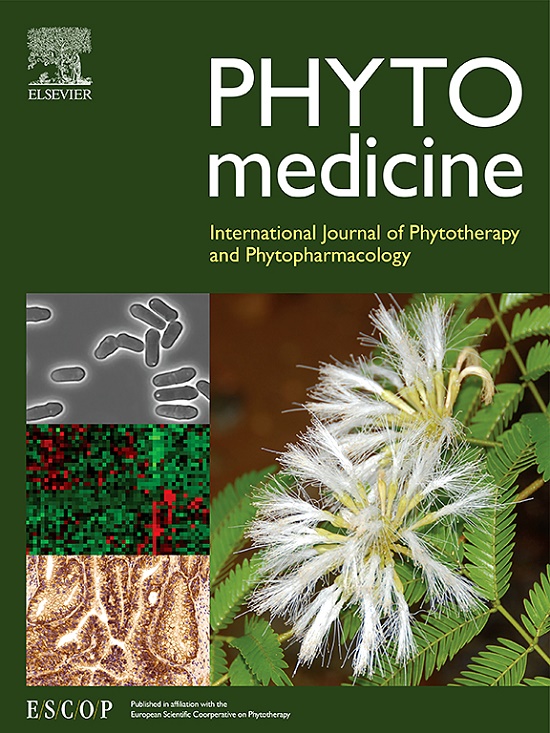治疗心力衰竭的草药的健康和经济评估:基于人群的队列研究。
IF 6.7
1区 医学
Q1 CHEMISTRY, MEDICINAL
引用次数: 0
摘要
背景:心力衰竭(HF)是各种心血管疾病的晚期,其入院率升高和由此产生的健康经济负担引起了全球持续关注。目的:评价中药治疗心衰患者的健康效益和经济效益。研究设计:基于人群的队列研究。方法:在中国某国家级医院进行为期5年的回顾性队列研究。本研究采用倾向评分匹配(PSM)对心衰患者进行匹配。二分类变量采用卡方检验,连续变量采用t检验。再入院率采用Logistic回归,直接医疗费用采用多元线性回归。p < 0.05为差异有统计学意义。结果:实施PSM后,1924例HF患者纳入分析。研究确定了影响再住院率的两个重要危险因素:年龄大于65岁(调整比值比(OR) = 1.25, 95%可信区间(CI)[1.02, 1.53])和吸烟(调整比值比(OR) = 1.31, 95% CI[1.01, 1.70])。此外,与未接受HM治疗的患者相比,接受辅助HM治疗的患者再入院率显著降低(调整后OR = 0.76, 95% CI[0.64, 0.92])。此外,患者住院期间使用HM对直接医疗费用没有显著影响,反而提供了积极的健康经济效益(增量成本-效果比(ICER) = 98.52)。影响直接常规医疗费用的因素包括65岁以上(Coef = 60.78, 95% CI[36.25, 85.31])和心功能分类(纽约心脏协会(NYHA) III: Coef = 1979.92, 95% CI [1401.82, 2558.03];NYHA IV: Coef = 6052.48, 95% CI[5166.59, 6938.38])。结论:心力衰竭患者整合HM降低了再入院率,但没有显著增加直接医疗费用,HM的费用保持在一个经济范围内,表明积极的健康经济结果。本文章由计算机程序翻译,如有差异,请以英文原文为准。
Health and economic evaluation of herbal medicines for heart failure: A population-based cohort study
Background
Heart failure (HF) represents an advanced stage of various cardiovascular disorders, with its elevated admission rates and resultant health economic burden posing an ongoing global concern.
Purpose
To evaluate the health and economic benefits of herbal medicine (HM) for patients with HF.
Study Design
Population-based cohort study.
Methods
A five-year retrospective cohort study was carried out at a nationally recognized hospital in China. The study utilized propensity score matching (PSM) to match patients with HF. Chi-square tests were used to analyze dichotomous variables, and t-tests were employed for continuous variables. Logistic regression was used to examine hospital readmission rates, while multiple linear regression was utilized to evaluate direct medical costs. Statistical significance was set at p < 0.05.
Results
After implementing PSM, 1924 HF patients were included in the analysis. The study identified two significant risk factors affecting the readmission rates: age over 65 years (adjusted odds ratio (OR) = 1.25, 95 % confidence interval (CI) [1.02, 1.53]) and smoking (adjusted OR = 1.31, 95 % CI [1.01, 1.70]). Additionally, patients who received adjunctive HM treatment exhibited a significantly lower readmission rate compared to those without HM treatment (adjusted OR = 0.76, 95 % CI [0.64, 0.92]). Furthermore, the use of HM during patient hospitalization did not significantly impact direct medical expenses but instead provided positive health economic benefits (incremental cost-effectiveness ratio (ICER) = 98.52). Factors influencing direct routine medical costs included over 65 years of age (Coef = 60.78, 95 % CI [36.25, 85.31]), and cardiac function classification (New York Heart Association (NYHA) III: Coef = 1979.92, 95 % CI [1401.82, 2558.03]; NYHA IV: Coef = 6052.48, 95 % CI [5166.59, 6938.38]).
Conclusions
The integration of HM in patients with HF reduced readmission rates without a notable increase in direct medical costs, and the expense of HM remains an economically range indicating positive health economic outcomes.
求助全文
通过发布文献求助,成功后即可免费获取论文全文。
去求助
来源期刊

Phytomedicine
医学-药学
CiteScore
10.30
自引率
5.10%
发文量
670
审稿时长
91 days
期刊介绍:
Phytomedicine is a therapy-oriented journal that publishes innovative studies on the efficacy, safety, quality, and mechanisms of action of specified plant extracts, phytopharmaceuticals, and their isolated constituents. This includes clinical, pharmacological, pharmacokinetic, and toxicological studies of herbal medicinal products, preparations, and purified compounds with defined and consistent quality, ensuring reproducible pharmacological activity. Founded in 1994, Phytomedicine aims to focus and stimulate research in this field and establish internationally accepted scientific standards for pharmacological studies, proof of clinical efficacy, and safety of phytomedicines.
 求助内容:
求助内容: 应助结果提醒方式:
应助结果提醒方式:


